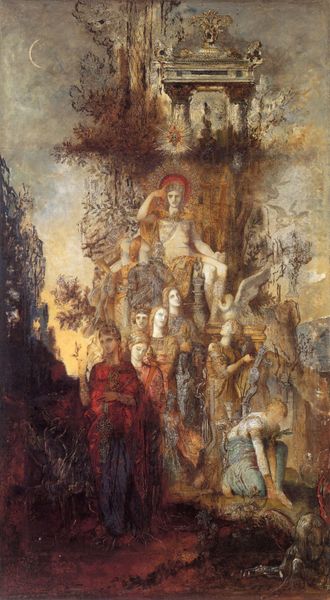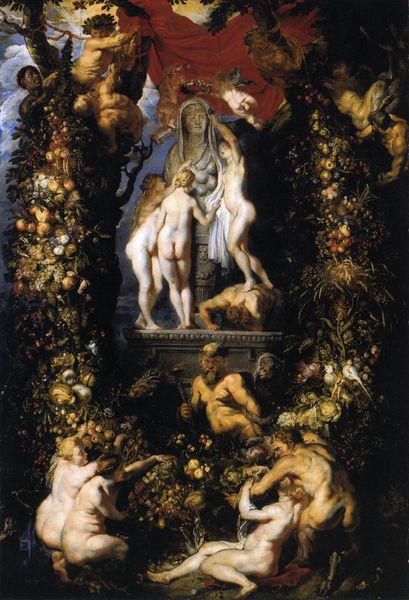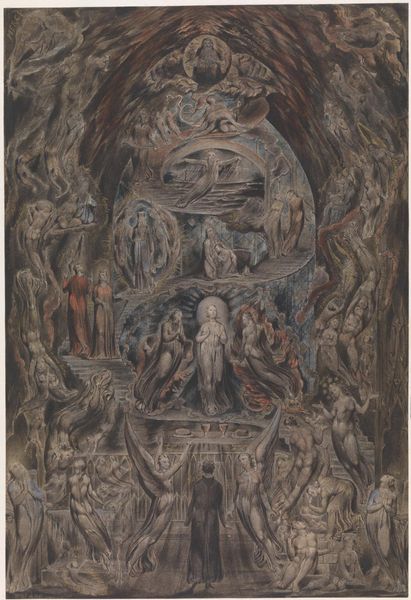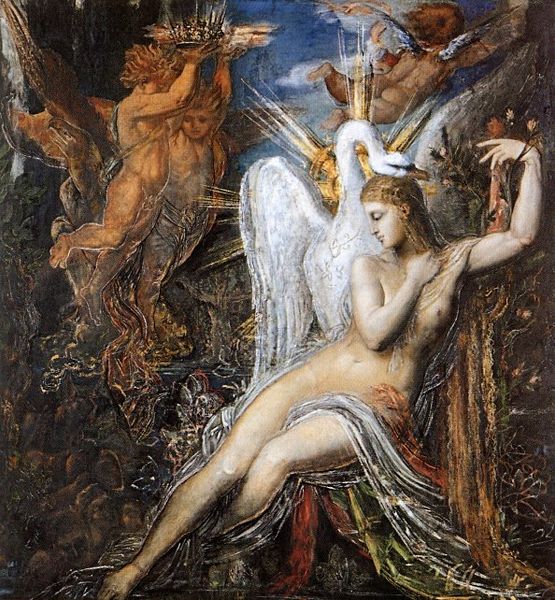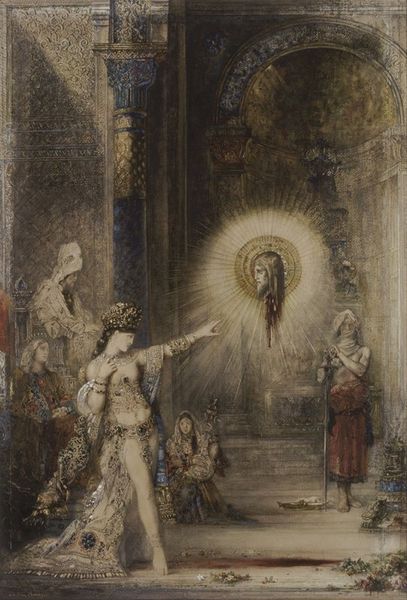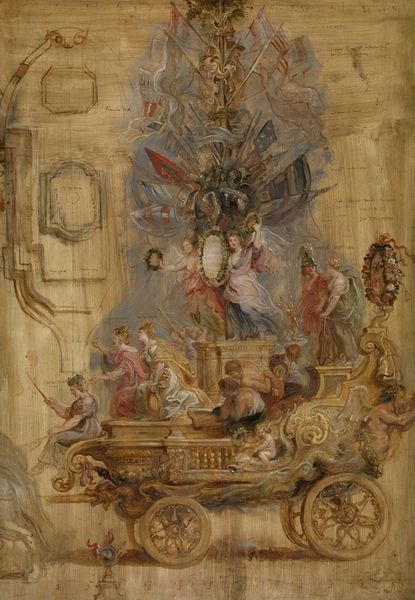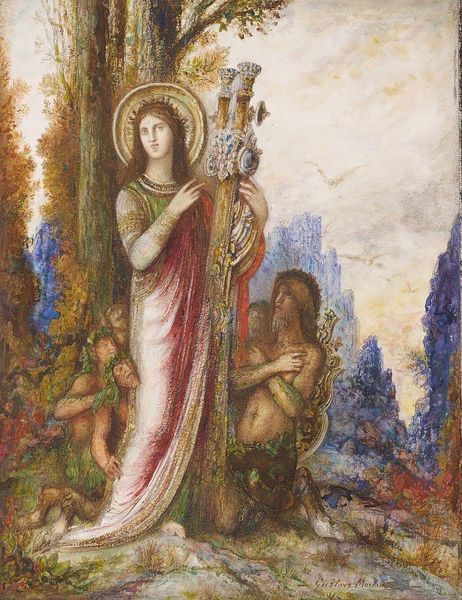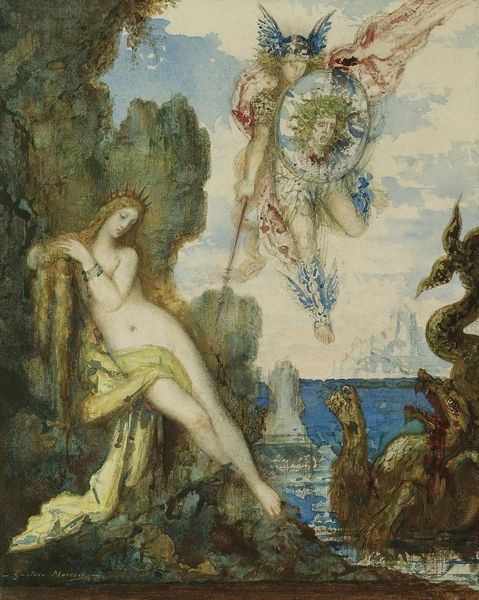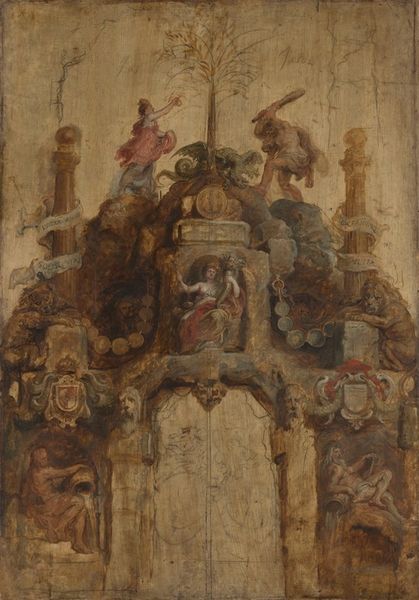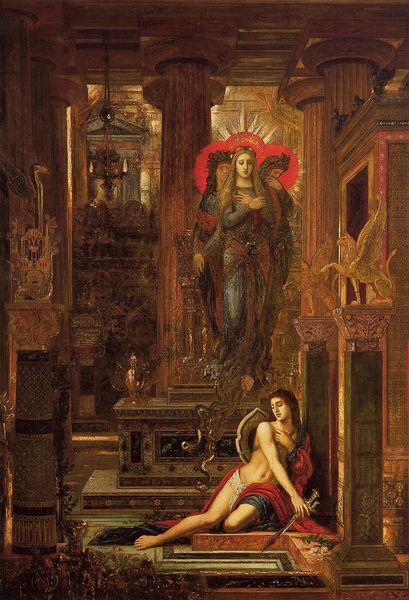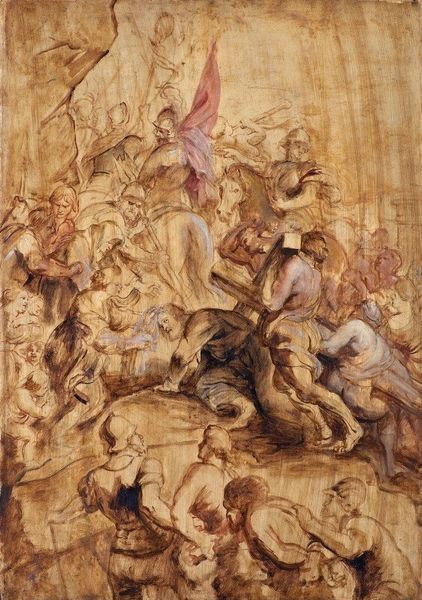
Copyright: Public Domain: Artvee
Curator: Look at the swirling chaos and intense detail. It reminds me of being inside someone’s dream, but not a particularly peaceful one. What’s the story behind this piece? Editor: This is Gustave Moreau's "Jupiter and Semele," an oil painting created between 1894 and 1895. Moreau delves into the tragic myth of Semele, a mortal woman consumed by divine revelation when she demanded to see Jupiter in his true form. The work exemplifies Symbolist painting at the time, with its themes of forbidden knowledge and destruction. Curator: Destruction is right! The composition feels claustrophobic. It's gorgeous, absolutely, but also unsettling, right? Like looking at something beautiful that’s about to collapse. Editor: Absolutely. If we unpack the dynamics present, we are able to explore questions of power, gender, and transgression that are at the forefront of contemporary debate. Semele's desire for a divine gaze challenges the patriarchal order, leading to her demise. We might view her act of defiance not merely as folly but a pursuit of emancipation. Curator: It also speaks to the danger of ambition. Or, maybe more precisely, the cost of knowing. But you can also see a desire here. I feel pity for her, sure, but also… I see her daring. The lighting definitely underlines that: this pale, almost ghostly figure is bathed in light from above. Jupiter, by comparison, feels stony and unyielding. It is kind of interesting… Maybe Moreau suggests she does not lack agency in this final meeting? Editor: Moreau positions this Greek narrative to probe into questions of hubris, gender dynamics, and divine authority. How do cultural narratives dictate what is deemed “appropriate” behavior for women, punishing them when they seek parity or visibility? Curator: It’s wild to consider it through this light! Looking closer, that intense accumulation of symbols – angels, mythical figures – surrounding them adds another layer. Is Moreau saying these mythic stories carry a lot of historical and societal baggage? Editor: Exactly. Moreau isn't merely illustrating a myth; he is critically investigating the structures that allow the repetition of its harmful rhetoric across cultures and generations. He explores issues concerning desire and destruction, to expose prevailing cultural biases, and advocate for marginalized voices. Curator: Whoa! That’s a lot more than meets the eye in that painting. All that's to say that these gorgeous Romantic colours kind of hide a deep deconstruction going on! Editor: Right. It urges us to question which narratives prevail and which are silenced, and challenges us to reimagine a more equitable distribution of power.
Comments
No comments
Be the first to comment and join the conversation on the ultimate creative platform.
